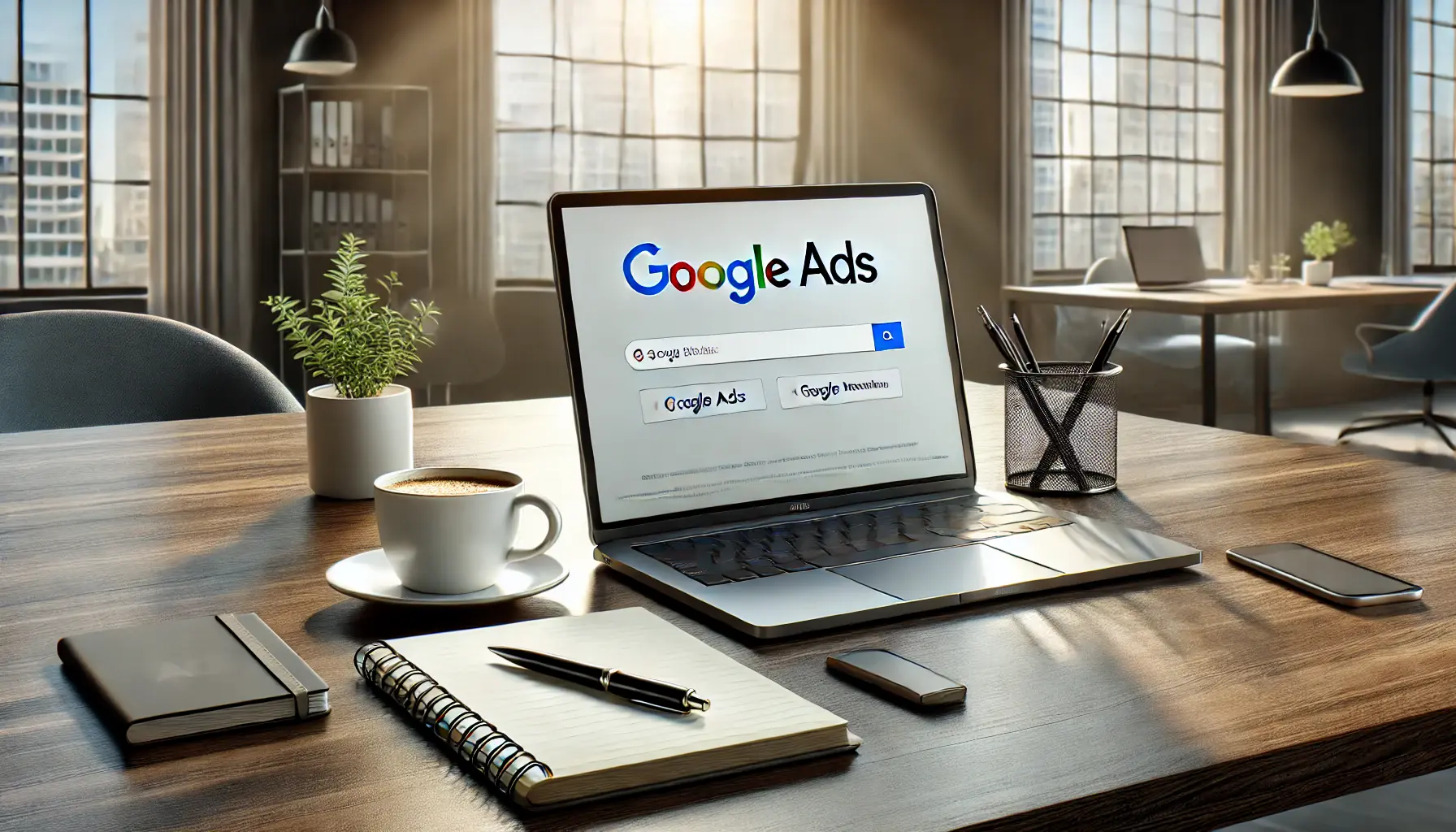The digital landscape is evolving, and with it, the elements that define its aesthetics.
Among these, typography stands out as a pivotal aspect of design, particularly in the realm of digital marketing.
Elegant typography, characterized by its sophisticated and refined appearance, has surged in popularity, becoming a key player in shaping brand identities and enhancing user experiences online.
This rise is not merely a trend but a reflection of the growing recognition of typography’s power to communicate, engage, and influence in the digital space.
Elegant typography transcends the basic function of making text readable.
It imbues content with personality, emotion, and clarity, transforming mere words into compelling narratives that resonate with audiences.
In the context of digital marketing, where the battle for attention is fierce, the strategic use of elegant typography can be the differentiator that sets a brand apart.
It’s not just about choosing the right font; it’s about crafting an immersive visual story that captivates and retains the viewer’s interest.
- Understanding the Impact of Typography in Digital Spaces
- The Evolution of Typography in Digital Marketing
- Typography Trends Influencing Digital Marketing
- Choosing the Right Typography for Your Brand
- Integrating Typography with Other Design Elements
- Typography’s Role in User Experience and Engagement
- Best Practices for Implementing Typography in Digital Marketing
- Conclusion: The Strategic Power of Elegant Typography in Digital Marketing
- Elegant Typography in Digital Marketing FAQs
Understanding the Impact of Typography in Digital Spaces
Typography in digital marketing is more than just a visual choice; it’s a strategic tool that can significantly affect how content is perceived and interacted with.
The right typographic choices can enhance readability, establish a tone, and create a sense of brand identity.
Elegant typography, with its clean lines and classic appeal, brings a level of sophistication to digital platforms, making them more attractive and engaging to users.
Moreover, typography influences the user’s journey on a website or digital platform.
It guides the eye, emphasizing important information and directing users through content in a way that feels intuitive and enjoyable.
The elegance of a typeface can elevate the overall user experience, making every interaction feel more refined and deliberate.
This not only improves user engagement but also reinforces the brand’s image as thoughtful and high-quality.
The Role of Typography in Brand Identity
Brand identity is crucial in the digital age, and typography is a key component of that identity.
Elegant typography can convey a brand’s values, personality, and professionalism.
It tells a story about who the brand is and what it stands for, all without saying a word.
This silent communication is powerful, capable of building a deep connection with the audience that transcends the visual.
Choosing the right elegant typography for a brand is a nuanced process.
It requires an understanding of the brand’s core values and the message it wishes to convey.
The chosen typography should reflect these elements consistently across all digital marketing materials, from websites to social media posts, ensuring a cohesive and recognizable brand identity.
Elegant typography is not just a design choice; it’s a strategic asset in digital marketing, enhancing brand identity and user experience.
The Evolution of Typography in Digital Marketing
The evolution of typography in digital marketing is a testament to the dynamic nature of design and technology.
As digital platforms have become more sophisticated, so too have the methods and styles of typography used to engage and attract audiences.
This evolution is marked by several key milestones that reflect broader trends in technology and consumer behavior.
Initially, digital typography was limited by technology, with a small selection of fonts that were universally available across different systems and browsers.
However, as technology advanced, so did the possibilities for typography in digital marketing.
Designers gained access to a wider array of typefaces, enabling more creativity and brand differentiation.
Key Milestones in Typography Evolution
- Web-Safe Fonts Era: The early days of web design were dominated by a handful of web-safe fonts, such as Arial, Times New Roman, and Verdana, to ensure consistency across different browsers and operating systems.
- Advent of Web Fonts: The introduction of web fonts, through services like Google Fonts and Adobe Fonts, revolutionized digital typography, allowing designers to use a vast selection of typefaces that could be easily embedded into websites.
- Responsive Typography: With the rise of mobile browsing, responsive typography became essential. Designers now had to ensure that typography looked good and remained readable across a variety of devices and screen sizes.
- Custom and Variable Fonts: The latest trend in digital typography is the use of custom and variable fonts. Custom fonts are created specifically for a brand, offering unique identity and differentiation. Variable fonts allow a single font file to behave like multiple fonts, with adjustable weight, width, and other properties, providing flexibility and efficiency in design.
Impact of Technological Advancements
Technological advancements have played a crucial role in the evolution of typography in digital marketing.
High-resolution screens and advanced web technologies have enabled designers to experiment with intricate typefaces and delicate details that were previously not feasible.
This has opened up new avenues for expressing brand identity and creating visually stunning digital experiences.
Moreover, technology has also influenced the way users interact with typography.
Touchscreens, for example, have led to larger, more touch-friendly typography that enhances usability and accessibility.
The evolution of typography in digital marketing is a reflection of both technological progress and changing user expectations, driving forward the endless pursuit of more engaging and effective digital communication.
The evolution of typography in digital marketing is closely tied to technological advancements, enabling more expressive and user-friendly designs.
Typography Trends Influencing Digital Marketing
The digital marketing landscape is continually influenced by emerging typography trends that shape how content is crafted and consumed.
These trends not only reflect current design preferences but also signal shifts in consumer behavior and technological capabilities.
Staying abreast of these trends is crucial for digital marketers aiming to create relevant, engaging, and effective campaigns.
Typography trends in digital marketing evolve, reflecting broader cultural shifts and technological advancements.
From bold and oversized lettering to minimalist and clean fonts, these trends play a significant role in how brands communicate and connect with their audience.
Current Typography Trends
- Minimalist Typography: Emphasizing simplicity and readability, minimalist typography with clean lines and ample white space has become popular for creating a sleek, modern look that focuses on content.
- Bold and Oversized Fonts: To grab attention and make a statement, brands are increasingly using bold and oversized fonts. This trend is particularly effective for headlines and calls to action, where immediacy and impact are key.
- Custom Fonts: Brands seeking uniqueness and identity are turning to custom fonts. These bespoke typefaces are tailored to a brand’s personality and values, offering a distinct visual voice in a crowded digital space.
- Variable Fonts: Offering flexibility and efficiency, variable fonts allow for a single font file to adjust weight, width, and other attributes dynamically. This innovation supports responsive design and creative typography expressions across different devices.
- Handwritten and Organic Styles: To add personality and warmth, digital marketers are incorporating handwritten and organic styles. These fonts mimic human handwriting, offering authenticity and a personal touch in digital communications.
Adapting to Trends for Digital Success
Adapting to typography trends requires a balance between staying current and maintaining brand consistency.
Digital marketers should consider how these trends align with their brand identity and audience preferences.
Implementing trendy typography can refresh a brand’s digital presence, but it should not compromise readability or the brand’s core values.
Moreover, leveraging the latest typography trends can enhance content engagement and conversion rates.
For instance, using bold and oversized fonts for key messages can improve visibility and impact, while minimalist typography can enhance the user experience by making content more accessible and digestible.
Ultimately, the successful integration of typography trends into digital marketing strategies hinges on understanding the brand’s voice, the audience’s expectations, and the goals of the campaign.
While typography trends offer fresh inspiration, their adoption should always align with the brand’s identity and audience’s needs.
Choosing the Right Typography for Your Brand
Typography is not just a matter of aesthetic preference; it’s a strategic choice that can significantly influence brand perception and user engagement.
The right typography can enhance brand recognition, convey brand values, and set the tone for all communications.
Conversely, the wrong choice can dilute brand identity and confuse the message.
Therefore, selecting the right typography is a critical decision for digital marketers.
Understanding the brand’s core values, target audience, and communication goals is the first step in choosing the right typography.
These elements should guide the typographic selection process, ensuring that the chosen fonts align with the brand’s identity and the message it intends to convey.
Factors to Consider When Selecting Typography
- Brand Personality: The typography should reflect the brand’s personality, whether it’s professional, friendly, innovative, or traditional. This helps in creating a consistent brand experience across all touchpoints.
- Readability and Accessibility: Fonts should be easy to read and accessible across various devices and screen sizes. This ensures that the message reaches the audience clearly and effectively.
- Uniqueness and Differentiation: Choosing a unique or custom font can help a brand stand out in a crowded marketplace. However, it’s important to balance uniqueness with readability and relevance.
- Compatibility and Flexibility: The selected typography should work well across different mediums and platforms, from desktop websites to mobile apps and print materials. This consistency strengthens brand identity and recognition.
Implementing Typography in Your Digital Marketing Strategy
Once the right typography has been selected, implementing it consistently across all digital marketing materials is crucial.
This includes the brand’s website, social media profiles, email campaigns, and any digital advertisements.
Consistency in typography reinforces brand identity and aids in building trust with the audience.
Moreover, it’s essential to monitor and evaluate the impact of typography on user engagement and conversion rates.
A/B testing different typographic elements, such as font sizes, styles, and arrangements, can provide valuable insights into what works best for the target audience.
This data-driven approach allows for continuous optimization of the brand’s digital marketing efforts, ensuring that the typography remains an effective and integral part of the brand’s communication strategy.
Consistent and strategic use of typography can significantly enhance brand communication and audience engagement in digital marketing.
Integrating Typography with Other Design Elements
Typography does not exist in isolation within the realm of digital marketing; it is part of a broader design ecosystem that includes color, imagery, layout, and interactive elements.
The integration of typography with these design elements is crucial for creating cohesive, engaging, and effective digital experiences.
A well-considered typographic strategy can enhance the overall design, guiding users through content, emphasizing key messages, and contributing to the storytelling process.
Effective integration of typography with other design elements requires a holistic approach to design, where every component works harmoniously to convey the brand’s message and values.
This synergy not only elevates the aesthetic appeal of digital marketing materials but also improves their functionality and user experience.
Harmonizing Typography and Color
The relationship between typography and color is pivotal in setting the mood and drawing attention to key content.
Color can highlight typography, making it stand out or blend seamlessly with the background.
Choosing colors that complement the typography enhances readability and visual impact.
For instance, high-contrast color combinations can make typography more legible and dynamic, while subtle color variations can create a sophisticated and understated look.
Combining Typography with Imagery
Imagery and typography can work together to tell a compelling story.
The choice of images and how they interact with text can amplify the message and engage the audience on a deeper level.
For example, overlaying elegant typography on evocative images can create a powerful visual narrative that captures the essence of the brand and its message.
It’s important to ensure that the typography complements the imagery, neither overpowering it nor getting lost within it.
Typography in Layout Design
The layout of digital marketing materials provides the framework within which typography operates.
A well-designed layout uses typography to create hierarchy, balance, and rhythm.
It guides the user’s eye through the content, from headlines and subheadings to body text and calls to action.
Typography can also be used to create focal points and to break up text into digestible sections, enhancing the overall readability and user experience.
Interactive Typography
In the digital space, typography can also be interactive, responding to user actions with changes in color, size, or animation.
This interactivity can add an element of surprise and delight, encouraging user engagement and participation.
Interactive typography should be used judiciously to enhance the user experience without compromising usability or accessibility.
The integration of typography with other design elements is key to creating cohesive and impactful digital marketing materials.
Typography’s Role in User Experience and Engagement
The role of typography in shaping user experience (UX) and engagement in digital marketing cannot be overstated.
It goes beyond mere aesthetics to influence how users perceive and interact with digital content.
A well-executed typographic strategy can significantly enhance usability, readability, and accessibility, leading to a more satisfying and engaging user experience.
Conversely, poor typography can detract from the user experience, leading to confusion, frustration, and disengagement.
Understanding the nuances of how typography affects UX and engagement is crucial for digital marketers aiming to create compelling digital environments that captivate and retain users’ attention.
Enhancing Readability and Accessibility
- Font Size and Spacing: Appropriate font size and spacing are essential for readability. Larger font sizes and adequate spacing (including line height and letter spacing) can make text more legible, especially on mobile devices.
- Font Choice: The choice of font has a direct impact on readability. Sans-serif fonts are often recommended for digital screens due to their clean lines and simplicity, which enhance legibility.
- Color Contrast: High contrast between text and background improves readability. Adequate contrast ensures that users can easily read content without straining their eyes.
Creating Emotional Connections
Typography can evoke emotions and set the tone for user interactions.
The choice of typeface can convey a range of feelings, from warmth and comfort to excitement and urgency.
By aligning the typographic tone with the content’s emotional intent, digital marketers can create more impactful and resonant user experiences.
For example, a luxury brand might use elegant, serif fonts to evoke sophistication and exclusivity, while a tech startup might opt for sleek, sans-serif fonts to convey innovation and modernity.
Guiding User Navigation
- Visual Hierarchy: Typography can establish a visual hierarchy, guiding users’ attention to key elements of the content. Headlines, subheadings, and body text can be differentiated through size, weight, and color, making it easier for users to navigate and digest information.
- Call-to-Action Buttons: Typography plays a crucial role in the design of call-to-action (CTA) buttons. Clear, compelling, and visually distinct typography can draw attention to CTAs, encouraging users to take the desired action.
Improving Overall Usability
Good typography enhances the overall usability of digital platforms.
It contributes to a clear and intuitive user interface, where information is presented in an organized and accessible manner.
This not only improves the user experience but also supports the achievement of the platform’s objectives, whether it’s increasing engagement, driving sales, or conveying important information.
Effective typography is a cornerstone of good UX design, significantly influencing user engagement and satisfaction in digital marketing.
Best Practices for Implementing Typography in Digital Marketing
Implementing typography effectively in digital marketing requires more than just selecting beautiful fonts.
It involves strategic planning, understanding user behavior, and adhering to best practices that ensure typography not only enhances the aesthetic appeal of digital content but also supports functionality and user experience.
Here are some best practices for integrating typography into your digital marketing efforts to maximize impact and engagement.
Consistency Across All Platforms
- Ensure typographic consistency across all digital platforms and marketing materials to reinforce brand identity and improve brand recall.
- Use a limited set of typefaces that align with your brand’s personality and values, and apply them consistently across your website, social media, emails, and other digital assets.
Focus on Readability and Accessibility
- Choose fonts that are easy to read on various devices and screen sizes. Prioritize legibility to ensure that your message is accessible to a broad audience, including those with visual impairments.
- Pay attention to font size, line height, and spacing. Adequate spacing between letters, words, and lines can significantly improve readability and user experience.
Use Typography to Guide User Attention
- Employ typographic hierarchy to organize content and guide users through your digital marketing materials. Use different font sizes, weights, and styles to distinguish between headings, subheadings, and body text.
- Highlight key information and calls to action using typography that stands out. This can help direct user attention to the most important parts of your content.
Embrace White Space
- Don’t be afraid to use white space around your text. White space can help reduce clutter, making your content more digestible and visually appealing.
- White space can also help emphasize important typographic elements, making them more noticeable and effective.
Test and Iterate
- Conduct A/B testing to determine which typographic elements resonate most with your audience. Test different fonts, sizes, and layouts to see what drives the best engagement and conversion rates.
- Be open to iterating on your typographic choices based on user feedback and performance data. Typography trends and user preferences can change, so it’s important to stay adaptable and responsive.
Stay Informed About Typography Trends
While consistency is key, staying informed about current typography trends can provide fresh inspiration and help keep your digital marketing efforts relevant and engaging.
Incorporate new trends judiciously, ensuring they align with your brand identity and enhance, rather than detract from, user experience.
By following these best practices, digital marketers can leverage typography as a powerful tool to enhance brand identity, improve user engagement, and achieve marketing objectives.
Typography, when used effectively, can transform digital content from ordinary to extraordinary, making it a critical element in any successful digital marketing strategy.
Typography is not just an element of design; it’s a strategic tool that, when used wisely, can significantly enhance the effectiveness of digital marketing campaigns.
Conclusion: The Strategic Power of Elegant Typography in Digital Marketing
The ascent of elegant typography in digital marketing is a testament to the evolving landscape of online communication and brand presentation.
As we’ve explored, typography extends far beyond the mere selection of fonts for readability.
It is a nuanced art form that, when executed with precision and creativity, can significantly elevate a brand’s digital presence.
The strategic integration of elegant typography into digital marketing efforts is not just about aesthetics; it’s about forging deeper connections with audiences, enhancing user experience, and distinguishing a brand in a competitive digital arena.
The Enduring Impact of Typography on Brand Identity
Elegant typography serves as a cornerstone of brand identity in the digital age.
It encapsulates the essence of a brand, conveying its values, tone, and personality without a single word being spoken.
This silent yet powerful form of communication can make a brand instantly recognizable, fostering a sense of familiarity and trust among its audience.
The choice of typography, therefore, becomes a critical decision in the branding process, one that can have lasting implications for a brand’s perception and success.
Enhancing User Engagement Through Typography
The role of typography in user engagement cannot be overstated.
With the right typographic elements, digital marketers can create content that is not only visually appealing but also highly engaging and interactive.
From guiding user navigation with clear hierarchies to using typography to evoke specific emotions, the strategic use of fonts and typefaces can significantly impact how users interact with digital content.
The ultimate goal is to create a seamless, enjoyable user experience that encourages engagement and fosters positive associations with the brand.
Best Practices for Typography in Digital Marketing
- Consistency is key: Maintain a cohesive typographic identity across all digital platforms to strengthen brand recognition.
- Readability and accessibility: Choose fonts that are legible across devices and considerate of users with visual impairments.
- Strategic emphasis: Use typography to highlight key information and guide users through the content effectively.
- Embrace white space: Utilize white space to create a clean, uncluttered layout that enhances readability and visual appeal.
- Stay adaptable: Be open to evolving your typographic strategy based on user feedback and emerging trends.
In conclusion, the rise of elegant typography in digital marketing is a reflection of the medium’s maturation and the growing recognition of design’s role in effective communication.
By carefully selecting and implementing typography, digital marketers can not only enhance the aesthetic appeal of their content but also deepen engagement, improve usability, and solidify brand identity.
As the digital landscape continues to evolve, the strategic use of typography will undoubtedly remain a critical component of successful digital marketing strategies.
Quality web design is key for a great website! Check out our service page to partner with an expert web design agency.
Elegant Typography in Digital Marketing FAQs
Explore frequently asked questions about the strategic use of elegant typography in digital marketing to enhance brand identity and user engagement.
Elegance in typography comes from the choice of typefaces that are clean, readable, and aesthetically pleasing, enhancing the brand’s digital presence.
It makes content more readable and visually appealing, guiding users through the digital space in an intuitive and enjoyable manner.
Yes, typography can significantly shape how users perceive a brand, conveying professionalism, personality, and values without words.
Consistency reinforces brand identity across all digital platforms, aiding in brand recognition and trust-building with the audience.
Typography establishes a visual hierarchy, highlighting key information and organizing content in a way that’s easy to navigate and understand.
Select typography that aligns with your brand’s personality and values, considering readability, uniqueness, and compatibility across mediums.
Current trends include minimalist designs, bold and oversized fonts, custom typefaces, variable fonts, and handwritten styles for authenticity.
Conduct A/B testing with different typographic elements to see which versions drive better engagement and conversion rates among your audience.














